Every Second Counts
Adding medical treatment simulations to active shooter response training can save lives
Vincent Torres (left) and Al Brotons take a “sword and shield” approach to active shooter response training
By Chad Hanson / Photography by Jeffery Salter

The Gordon Center has opened Florida’s first regional training hub in Tallahassee to provide its innovative, collaborative active shooter response training to law enforcement. Supported by funding from the Florida Department of Education, the curriculum expands traditional active shooting response to include basic medical training for law enforcement officers.
“It’s not just the paramedics doing medicine,” said Vincent J. Torres, emergency management director for the Miller School and UHealth – the University of Miami Health System and associate director of disaster management at UM’s Global Institute for Community Health and Development. “It’s cops doing medicine, too — putting on tourniquets, putting on chest seals. Every second counts.”
“It’s all about time,” said Al Brotons, director of training operations at the Gordon Center. “A person can bleed out within three to five minutes if we don’t get a tourniquet on them.”
The active shooter curriculum has benefited from the U.S. Army Trauma Training Detachment’s expertise and input, which conducts all of its pre-deployment Army Forward Surgical Teams training at the Gordon Center’s Miami facility.
“They’re teaching these teams how to work in the battlefield, literally from point-of-care injuries to surgery,” Brotons said. “We brought them in to help us create this course, because who knows better than they do?”
The Sword and the Shield
Since the mass shooting at Columbine High School in Colorado in 1999, active shooter response training has advocated for medical personnel to wait for police or SWAT teams to secure the shooting environment, known as the “hot zone.”
The approach has changed over the years, and the Gordon Center curriculum now prepares medical personnel to enter areas where the shooter is known to be absent (the “warm zone”) alongside law enforcement. This change translates to quicker, potentially lifesaving treatment for victims in safer locations.
“We define this as a rescue task force,” Brotons said. “Law enforcement officers and medics go in together, as a team.”
Torres calls it the “sword and shield” concept. Officers serve as a protective shield for paramedics and firefighters in the warm zone, enabling quick treatment before receiving safe escort to a casualty collection point. At the same time, a law enforcement contact team — the sword — patrols the hot zone in search of the shooter. If the shooter enters the warm zone, the rescue task force officers can engage and stop the threat.
Three-tiered Training
Brotons and Torres test their students’ mettle with three-tiered, increasingly complex active shooter exercises, with real people playing shooter and victims.
The sequence’s first scenario is relatively simple, with one room and a couple of shooting victims. The second — multiple rooms, multiple victims — poses a greater challenge to communication and coordination of movements. The final scenario extends the chaos and uncertainty, with an entire building to account for, amidst blaring alarms and the screams of the simulated victims.
In actual active shooter situations, coordinating that action isn’t simple. The entities that typically respond — police, fire departments and emergency medical teams — are distinct organizations operating under separate chains of command and organizational procedures. This new training approach helps create one cohesive team under a unified command.
“Someone from each agency needs to come together in a command group to talk about what’s going to happen and who’s responsible for what roles,” Brotons said.
Torres added: “You can have a million cops and a million firefighters responding to an active shooting. If they’re not getting direction from a unified command structure, nothing positive is happening.”![]()



